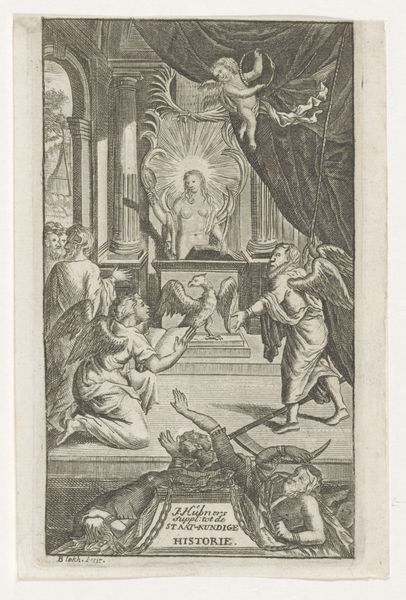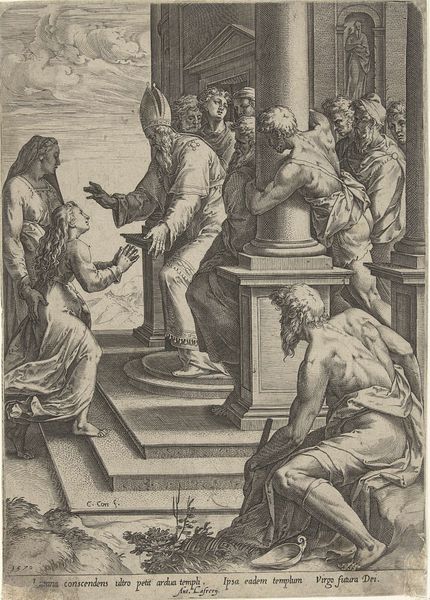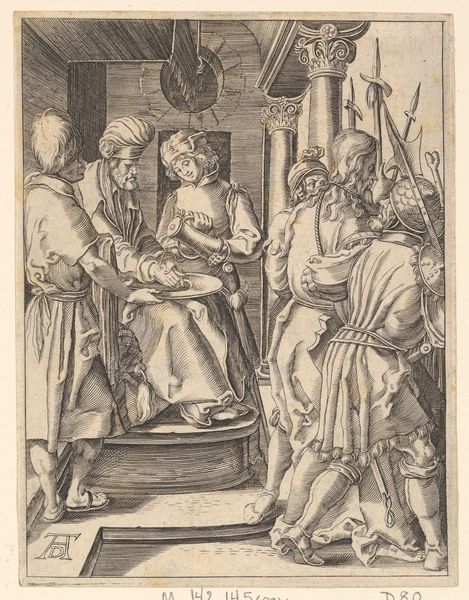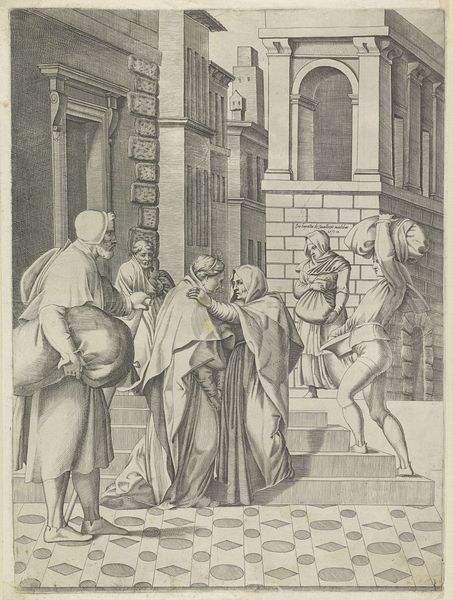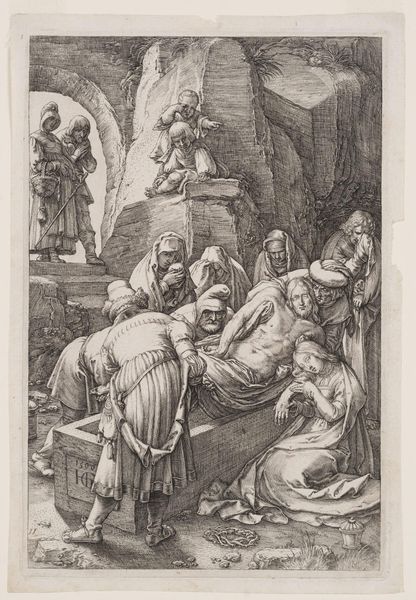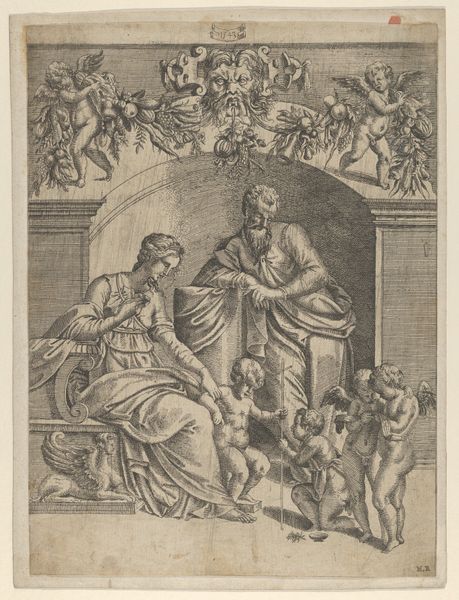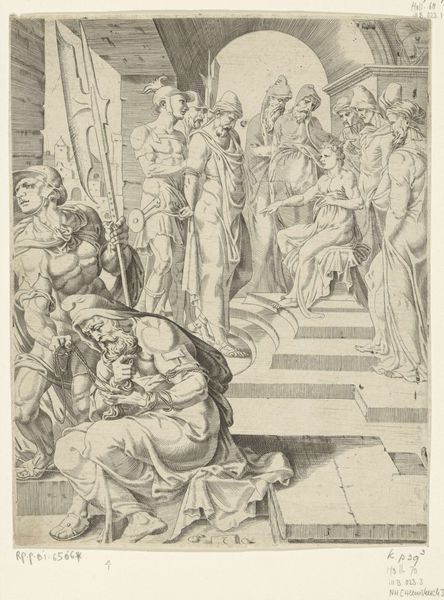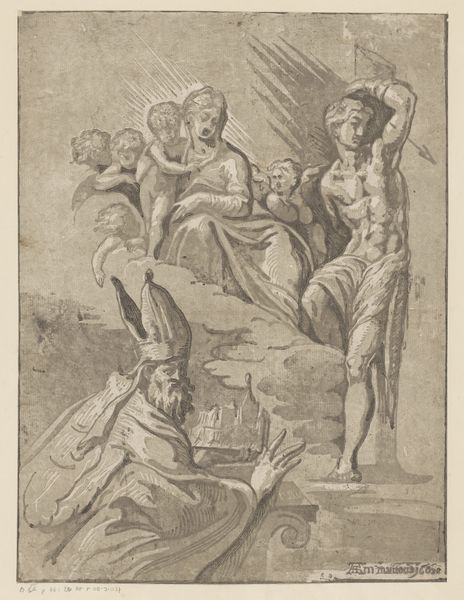
De heilige Jozef en een bisschop bij een altaar met Maria met Kind 1498 - 1532
0:00
0:00
marcodente
Rijksmuseum
drawing, print, engraving
#
portrait
#
pencil drawn
#
drawing
# print
#
pencil sketch
#
figuration
#
pencil drawing
#
coloured pencil
#
genre-painting
#
history-painting
#
italian-renaissance
#
engraving
Dimensions: height 264 mm, width 187 mm
Copyright: Rijks Museum: Open Domain
Editor: We're looking at "Saint Joseph and a Bishop near an Altar with Mary and Child," an engraving by Marco Dente, dating sometime between 1498 and 1532. The detail achieved through the engraving technique is quite remarkable. I’m curious, what compositional elements stand out to you? Curator: Immediately, the architectural structure—the fluted columns, the carefully delineated lines creating depth, and the arrangement of figures within a defined space strike me. How the figures inhabit that architecture further informs my read. Editor: Could you expand on that? How does their positioning affect our perception? Curator: Certainly. Observe how the Bishop on the left directly faces us, while Saint Joseph on the right bows toward the Madonna and Child. There's an immediate awareness of planes, of who occupies what spatial zone and with what visual rhetoric. The linear precision serves to differentiate the figures from one another as they simultaneously cohere, unified in relation to the central Madonna. Do you perceive an organizing geometry to the whole? Editor: Now that you mention it, yes. There's almost a triangular structure implied, with the Madonna at the apex and the other two figures forming the base. Curator: Precisely. Consider also the textures rendered, the smoothness of Mary's face in stark relief to Saint Joseph's wrinkled features, the patterned garb, and notice where Dente chooses to concentrate or relax the pressure and depth of his lines. Do you note how the vanishing point is treated? It’s above the figures at center and pulls the viewer’s gaze towards Mary. The result is a structured hierarchy with careful modulation of light and shadow to reinforce that dynamic. Editor: It is striking how those simple aesthetic choices affect what the artwork expresses. It goes far beyond just what’s represented! Thank you for shedding light on these crucial aspects. Curator: My pleasure! Reflecting on Dente's skillful manipulation of line and form allows us to appreciate the work's sophisticated formal language.
Comments
No comments
Be the first to comment and join the conversation on the ultimate creative platform.
